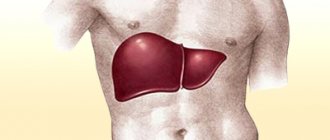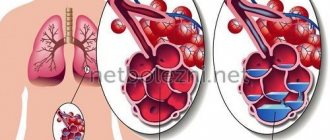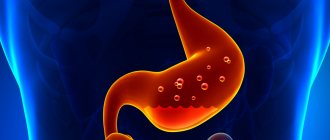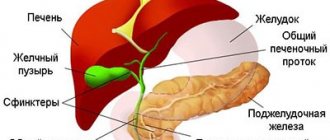Endocrinologist
Tarasenko
Olesya Sergeevna
8 years of experience
Endocrinologist
Make an appointment
Cachexia has been known in medical circles since the time of Hippocrates. This term refers to extremely severe depletion of the human body, complicating the course of a number of diseases, leading to death. A person experiences severe weight loss, metabolism is disrupted, and physiological processes slow down. Against the backdrop of deteriorating health, the mental state also changes. Regardless of the reasons for the development of the disease, the manifestation of symptoms remains the same. Cachexia is mainly discussed at the last stage of serious diseases. We are talking about AIDS, oncology, tuberculosis, sepsis, severe burns, and chronic heart failure.
Description of cancer cachexia
Cachexia in oncology is expressed by accelerated loss of body weight, which can decrease to critical limits. Along with neuromuscular weakness, loss of appetite is observed, and biochemical processes in the body are disrupted. Cancer cachexia negatively affects the functions of almost all organs. As the pathology develops, it causes irreversible processes and leads to death.
The likelihood of cancer cachexia depends little on the location of the malignant tumor. Most often, the pathology accompanies cancer of the lungs and digestive organs.
Etiology of occurrence
The exact causes of cancer cachexia have not been established. Since exhaustion is associated with cancer, it is more endogenous - caused by internal changes in the body. Among the factors of the phenomenon are:
- hormonal imbalances;
- metabolic disorders;
- abnormal functioning of the gastrointestinal tract;
- pathologies associated with olfactory and taste receptors;
- dehydration;
- hypothermia or overheating;
- consequences of surgery;
- unbalanced diet;
- purulent abscesses, etc.
One of the main causes of cancer cachexia is considered to be intoxication, which is caused by a malignant tumor as it grows. The process is typical for late stages of cancer and may be a consequence of excessive anticancer therapy. As they multiply, malignant cells actively absorb oxygen and nutrients, leading to physical and energy starvation of the body.
Stages of cachexia
Each stage of the disease has certain signs that allow doctors to assess the severity of the pathology.
In an early stage called precachexia, the patient begins to lose appetite and eat less food. The process is accompanied by thirst, increased urination, and a feeling of lack of salt. The energy balance is disrupted.
The second stage is accompanied by a deterioration in health. The patient experiences a noticeable reduction in muscle mass and weight loss.
At the same time, the body temperature drops and the legs swell. In some cases, mental abnormalities begin to appear.
The third stage is refractory (severe) cachexia. At this stage, subcutaneous fat tissue completely disappears, muscles atrophy, and there is a threat of starvation coma and secondary infection, followed by death.
The sooner the pathology and its causes are identified, the greater the chance that the result of treatment for cachexia will be successful.
Classification and forms of the disease
Cachexia is classified according to etiology, mechanism of development, stages and forms. Depending on the factors that cause it, pathology is divided into exogenous (due to external reasons) and endogenous (due to internal disorders).
Symptoms of cancer cachexia
The disease is accompanied by a number of symptoms that affect the physical and psycho-emotional state of a person. It is expressed:
- lethargy, weakness, fatigue;
- regular constipation or diarrhea;
- circadian rhythm disturbances, insomnia at night and drowsiness during the day;
- depression, apathy, increased irritability, frequent mood swings;
- loss of the ability to adequately assess the surrounding world.
At the same time, accelerated weight loss is observed. However, this symptom may be absent if the pathology is associated with hormonal imbalances (if the cancer affects the uterus, ovaries or mammary glands).
For a malignant form of the disease:
- the skin dries out, becomes flabby and wrinkled. It turns gray or acquires a yellowish-earthy tint;
- nails and hair become brittle, hair loss is possible;
- The condition of the oral mucosa and gums is disrupted, teeth become loose and fall out.
In addition, cachexia in cancer patients is accompanied by tachycardia, hypotension and anemia.
About the syndrome
The problem we're looking at isn't just weight loss. In essence, this is a condition that is characterized by loss of muscle mass, but loss of fatty tissue is not at all necessary.
Muscle mass decreases due to anorexia and metabolic disorders.
This syndrome of patients with cancer is characterized by four symptoms:
- Loss of skeletal muscle mass;
- Anorexia;
- Saturation with small amounts of food;
- Fatigue.
This syndrome is characteristic of the last stage of cancer of the stomach and pancreas. It is also noted in patients with cancer of the lungs, colon and prostate gland (almost 50% of cases), in patients with breast cancer (approximately 1 case out of 4).
In principle, the syndrome can manifest itself in different types of cancer tumors. As a malignant neoplasm develops, it consumes more substances and needs more energy. The patient's appetite decreases and the digestive process is disrupted. Approximately a quarter of cancer patients die due to cachexia.
Diagnostic measures
The diagnosis of “cancer cachexia” is made against the background of anamnesis (presence of a malignant tumor). In this case, the patient’s complaints are considered, an external examination is performed, and laboratory and instrumental studies are carried out.
Particular attention is paid to the negative balance of anabolic to catabolic processes. Reduced appetite, weakened muscles, external exhaustion and weight loss are taken into account.
To determine the functionality of the liver and kidneys, as well as to identify anemia, they resort to a general and biochemical analysis of the patient’s blood and urine. To prevent septic disorders, urine is examined by bacterial culture.
If there is uncertainty about the oncological nature of the pathology, the patient’s chest is examined using radiography, and the abdominal organs are examined using ultrasound, colon, gastro and hysteroscopy. Taking into account the nature and location of the tumor, the brain undergoes magnetic resonance imaging.
Body and energy
In a normal state, the body is a mechanism where there is a balance between energy consumed and energy expended. In this regard, unlike weight gain, weight loss is a phenomenon that requires special attention.
The fact is that weight gain is a natural state: nature is designed in such a way that the body consumes more substances than it expends. This is necessary from an insurance point of view.
If a person is on a diet or is sick, energy is consumed in a balanced manner and the first thing to be utilized is the reserves of subcutaneous fat. This is where everything you need comes from. When these reserves are depleted, the body's energy is taken from the fat of the internal peritoneal cavity. Then from organs containing fat cells.
Only after all this does the breakdown of muscle tissue proteins begin. First, the skeletal muscles are released, then the proteins contained in the organs.
Treatment of cancer cachexia
Since cancer cachexia is a consequence of cancer, successful treatment of the pathology is possible only after eliminating the main cause - malignancy. Therapeutic procedures to combat exhaustion come down to normalizing nutrition, taking medications, radiation, physical exercise, etc. Nutrition for cachexia should contain as many calories as possible.
Considering the danger of the disease, specialized dispensaries are used for treatment procedures, where the necessary equipment is available and it is always possible to provide emergency assistance in emergency cases.
Cure cachexia is difficult, but possible. Drug treatment of cancer cachexia is carried out using:
- “Megaisa”, which, due to its potent components, is prescribed on an individual basis, based on the patient’s condition and degree of exhaustion;
- "Cocarboxylase", prescribed to reduce pain and support the functions of internal organs. Long-term use of the drug helps the patient regain weight;
- "Hemoferon";
- "Retabolil";
- fish oil, which reduces the negative effects of chemotherapy and radiotherapy on the body. The drug promotes more effective irradiation of malignant tumor cells.
Thiophane helps improve intestinal motility for cachexia, and Tramadol relieves pain. If the pathology has reached a severe stage, then, in addition to the medications necessary to normalize nutrition and relieve pain, the intensity of treatment procedures increases due to:
- vitamin complexes;
- amino acids;
- glucose solutions;
- protein hydrolysates.
If the disease is hormonal in nature, hormone therapy is used.
If a malignant tumor affects the stomach, duodenum and other organs of the gastrointestinal tract, then in most cases treatment of exhaustion is unsuccessful.
Forecasts
At the present stage of development of medicine, the prognosis of cancer cachexia leaves much to be desired. Most often, even with intensive therapy, no noticeable improvements in the patient’s condition are observed. The pathology progresses due to disruption of internal organs, weakened immunity and secondary infection. A decrease in protein levels in the body by 30–50% leads to death.
It turns out that it is exhaustion, and not cancer itself, that explains the mortality rate of 20–50% of patients with cancer. Moreover, the average life expectancy with cancer cachexia does not exceed 2 months.
Although it is very difficult to overcome cachexia in cancer, it is possible to prevent it. By maintaining a healthy lifestyle and regular examinations, the chances of detecting pathology in the initial stages increase significantly, which significantly increases the chances of a successful outcome.
About the problem
When a person loses weight, this may indicate the presence of an advanced stage of cancer.
During treatment for stomach cancer, the cancer patient loses weight at once. So, before surgical manipulation, appetite disappears due to stress, after it, minimal nutrition is necessary. Typically, appetite returns after five to seven days, and after a month the patient’s weight becomes normal. The postoperative period of weight restoration with intervention in the gastrointestinal tract lasts longer.
Chemotherapy courses cause the patient problems such as:
- Nausea;
- Vomit;
- Damage to the mucous membranes of the oral cavity and gastrointestinal tract.
The above do not contribute to appetite. Radiation therapy can also cause nausea because the lining of the esophagus is damaged by irradiation, for example, of the mediastinal organs or lungs.
By irradiating the genitourinary organs, they strike the large intestine and rectum. In addition, restriction in food intake is necessary here. Accordingly, the patient’s weight also suffers.
Note that in all of these cases, weight loss occurs by no more than five percent of the original. After treatment, the weight begins to return to normal. The main difference between weight loss and cancer syndrome is that after completion of treatment, weight increases without problems.








